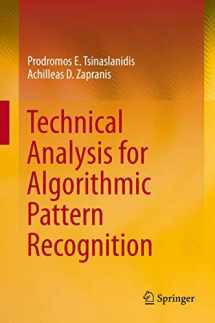
Technical Analysis for Algorithmic Pattern Recognition
Book details
Summary
Description
The main purpose of this book is to resolve deficiencies and limitations that currently exist when using Technical Analysis (TA). Particularly, TA is being used either by academics as an “economic test” of the weak-form Efficient Market Hypothesis (EMH) or by practitioners as a main or supplementary tool for deriving trading signals. This book approaches TA in a systematic way utilizing all the available estimation theory and tests. This is achieved through the developing of novel rule-based pattern recognizers, and the implementation of statistical tests for assessing the importance of realized returns. More emphasis is given to technical patterns where subjectivity in their identification process is apparent. Our proposed methodology is based on the algorithmic and thus unbiased pattern recognition. The unified methodological framework presented in this book can serve as a benchmark for both future academic studies that test the null hypothesis of the weak-form EMH and for practitioners that want to embed TA within their trading/investment decision making processes.


We would LOVE it if you could help us and other readers by reviewing the book
Book review



